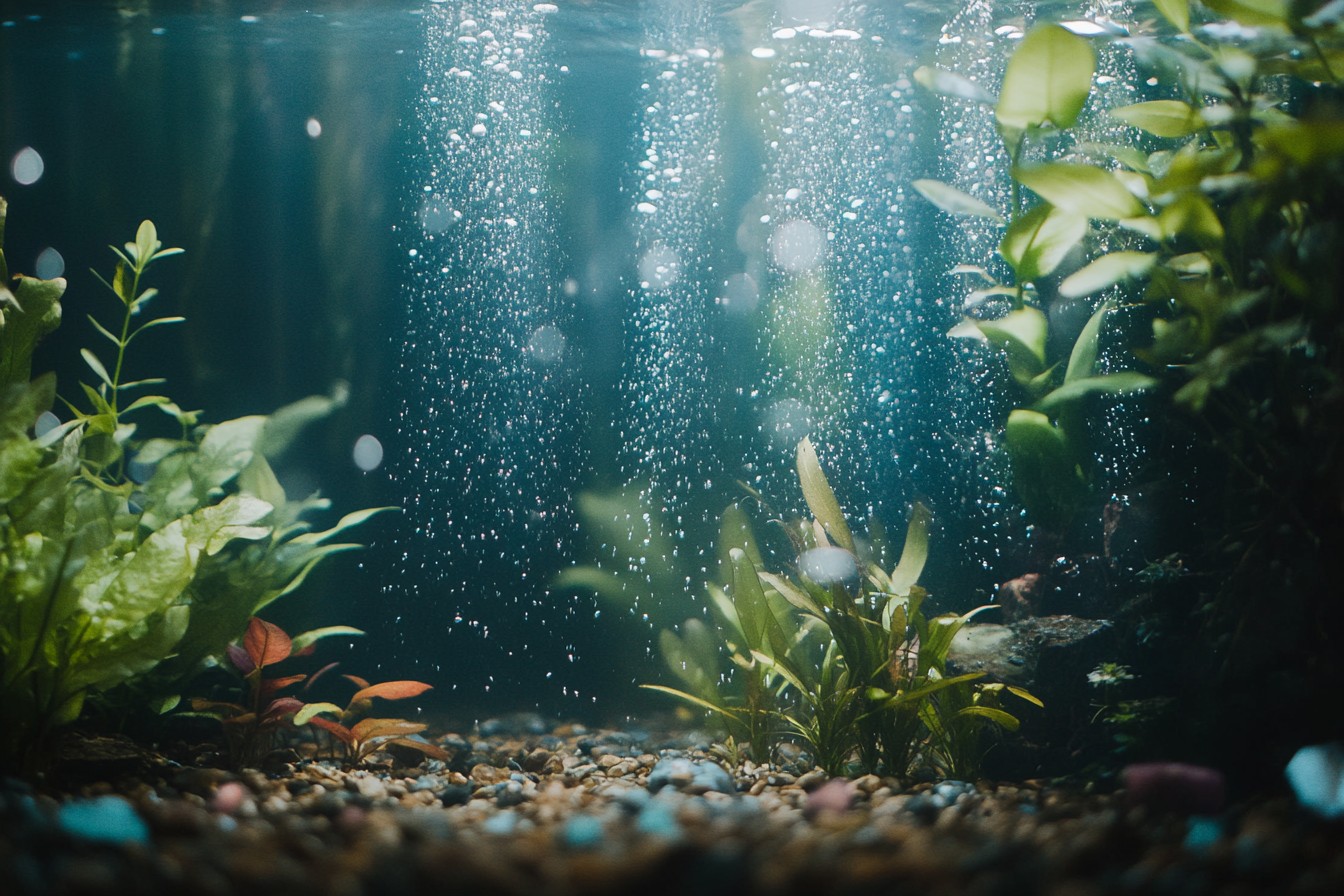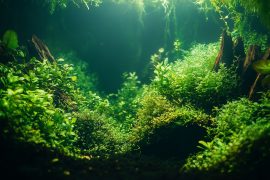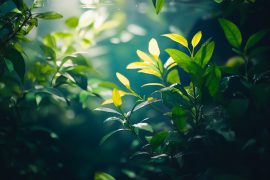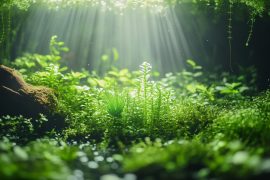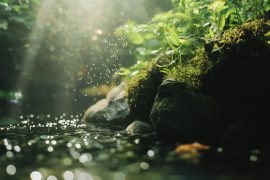An aquascape’s background is like a painting’s canvas: it is often overlooked and underestimated, but it is absolutely pivotal to the overall effect. I learned this the hard way after spending three weeks perfecting a Dutch-style planted tank for an important client, only to step back on installation day and notice the stark white wall behind the tank was reflecting light like a spotlight, completely washing out the careful layering of red and green plants. The client was absolutely, bless her patience, watching me frantically tape up black poster board as a temporary fix stammering excuses.
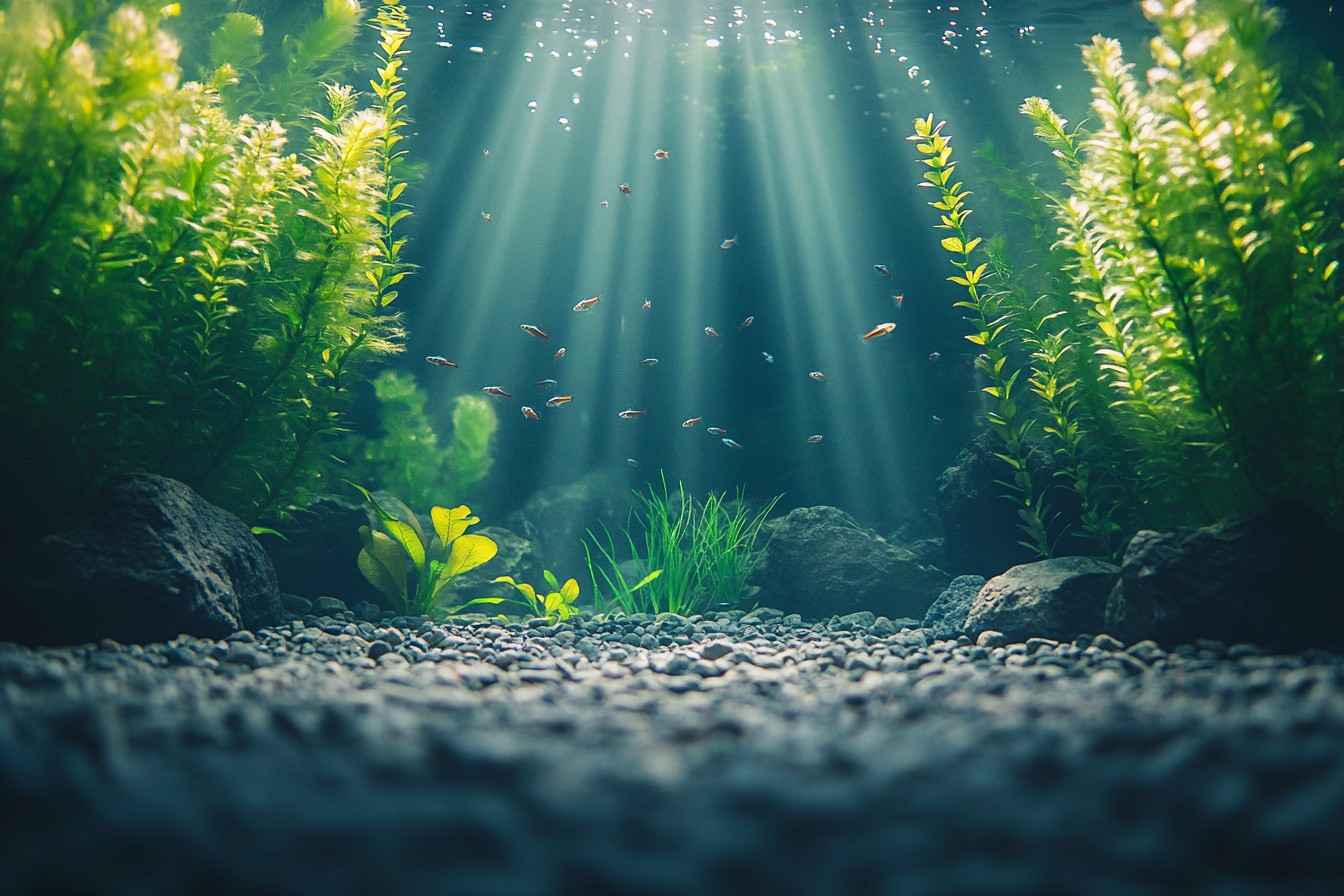
“Couldn’t you have thought about this before?” she asked, while stifling a laugh and shaking her head. Well, yeah. It’s a mistake I shouldn’t have made.
Ever since that humbling experience, I’ve become almost fanatical about backgrounds. They are vital elements that shape anything and everything from fish behavior, plant growth, and their space to the overall visual impact of the aquarium. A carefully selected glass box display goes beyond being merely a container; it turns an aquarium into a portal to an entirely new realm.
Let’s discuss the options because they outnumber what most people think. The classic, solid color backgrounds, typically black or dark blue, remain popular for good reasons; they add depth, enhance colors, and don’t distract from the composition in the tank. I had a navy background on my 75-gallon rainbowfish display and those shimmering scales truly shimmer against the dark background.
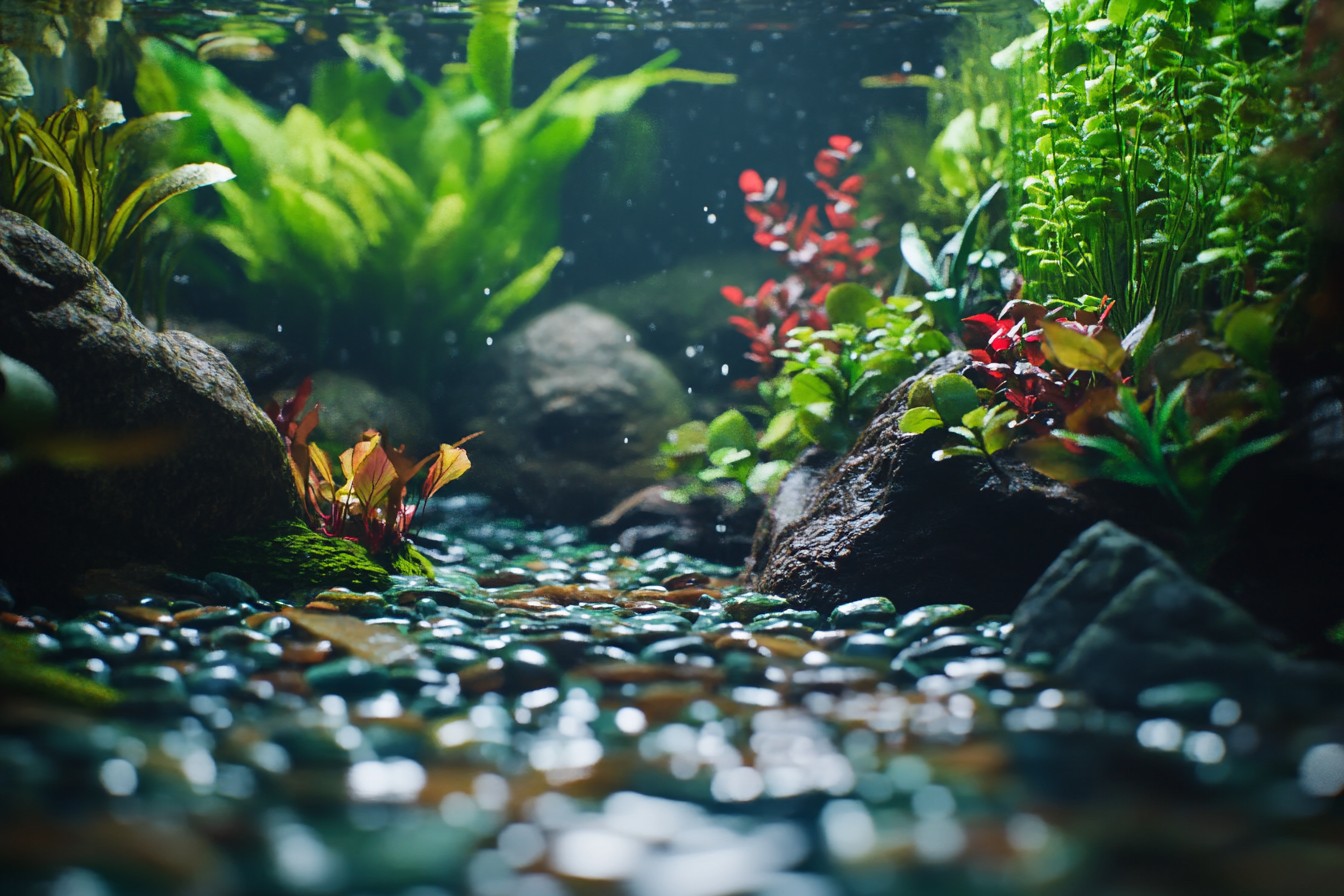
The fish quite literally appear to be glowing from the inside. But, solid colors and gradients that blend from dark at the bottom to light at the top are just the beginning. They simulate the natural light attenuation that happens in deep water.
They are especially effective in creating the illusion of infinite depth. A client of mine had one installed on their discus tank last year and people who view the tank always ask why it looks so much deeper than its actual dimensions. Photographic backgrounds can be useful for biotope setups but only if, and this is a big if, they are used correctly.
The key is subtlety, those cartoon-like plants and rocks oversaturated backgrounds do not work and are best avoided.

But an adequately scaled and placed image of an actual underwater habitat, an impressionistic version of what it looks like underwater, is magic. I remember distinctly setting up an Amazon blackwater biotope, where we incorporated a background depicting submerged tree roots that we photographed in situ at Rio Negro.
The elements of the tank, consisting of tannin-stained water, leaf litter, and branches while aligning with the background image, created an astonishing blend that erased the boundary between the tank backdrop and the actual tank elements. It was my client’s teenage son who said, “the tank goes on forever,” which perfectly encapsulated our intentions with this design. Now, application methods are critically important.
Bubbles, wrinkles, or the trademark white line (a discussing absence that never quite touches the edge of the tank) destroys a perfect background. From tape (amateur hour) to spray adhesive (effective but permanent), I have tried every imaginable application method, including commercial solutions for attaching background (decent but overpriced). My favorite method now?
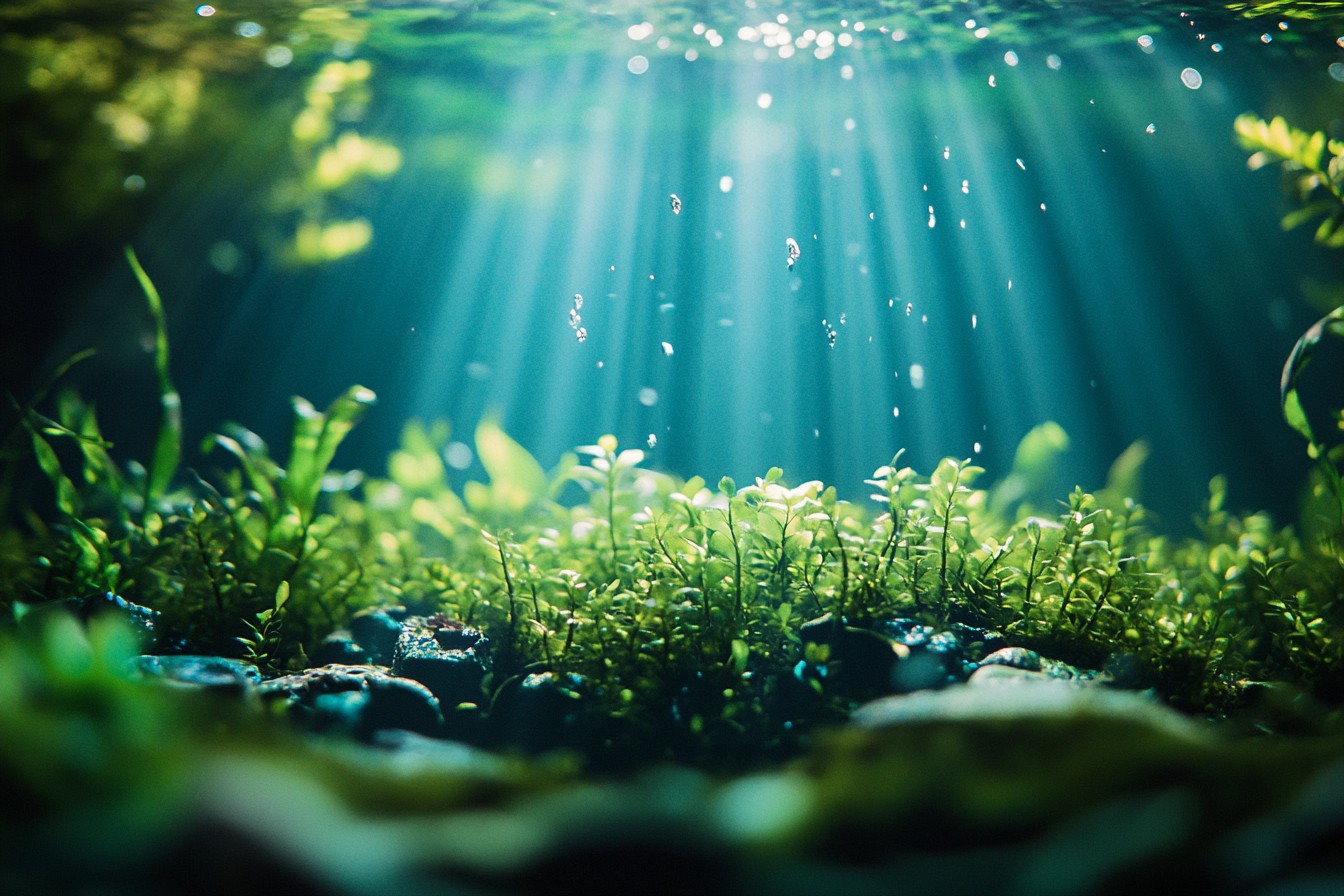
Plain vegetable oil. Sounds bizarre, I know, but a thin layer applied to both the glass and the background creates sufficient adhesion while allowing for adjustments and eventual removal if needed. It’s all about balance—using too much creates a greasy look and too little causes air pockets.
It took me about twenty tries to perfect this one technique, and I still occasionally blunder it. Important to mention: this only works for external backgrounds. Internal backgrounds are a completely different story and in my opinion, that’s where the true artistry lies.
There is no beating realism when a background is built into a tank using materials such as foam, cement, epoxy, and various texturizers. Last summer, I spent two months working on an internal rock wall background for a 300 gallon cichlid display tank at a corporate head office. I sculpted the base with a large block of insulation foam, then encased it in multiple layers of cement, pigments for realism, aquarium-epoxy seal, and aging to make it look authentically weathered.

Did I go overboard? It’s possible. While that is a question open for debate, I’m certain I wasn’t the only one still spotting cement dust among their hair weeks after.
Without a doubt, but the tank ended up looking like an actual piece taken from Lake Malawi, cementing my resolve over any back pain and chemical scents endured.
Certainly, not everyone has the time, have the willingness, or the space to turn their garage into a cement-infused disaster zone for weeks on end. There are some excellent commercial polystyrene options for 3D backgrounds, some made of polyresin, others from compressed coconut fiber, and the high end ones made of natural materials like stone or wood mounted on flexible backing. I have used “coconut coir” backgrounds to create paludariums “with great success”.
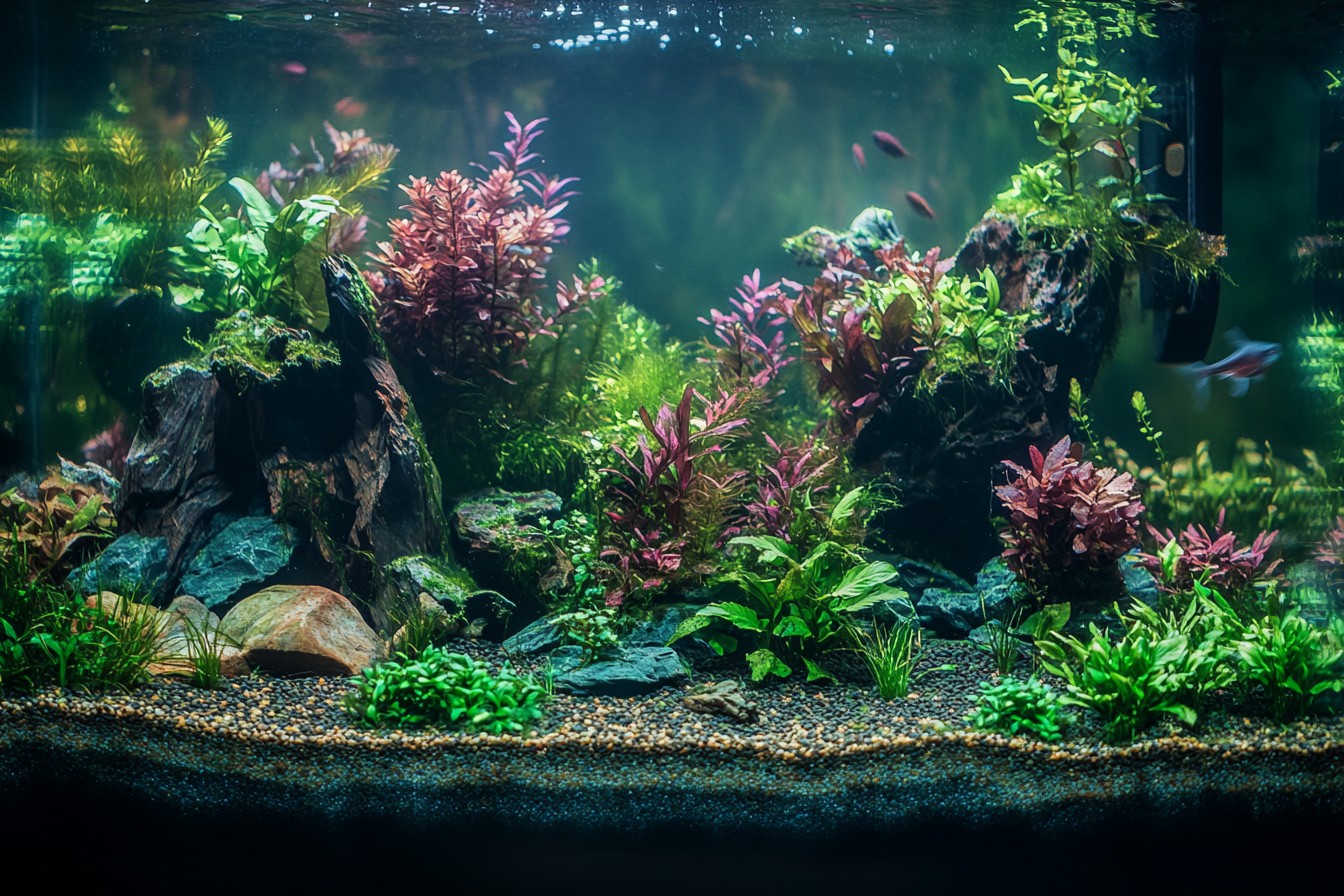
These clear anchor points develop over time into exquisite colonies of gentle algae growth. My 60 gallon poison dart frog habitat is a classic example, it uses this material with vines and mosses so thoroughly established that it is impossible to tell where the background ends and the living plants begin. One often neglected approach is…
further growing stems. A proportioned wall of Jungle Val or Vallisneria creates a living background that sways gently with water movement. For my home office tank which I see primarily from my desk during video calls (yes, I’m that person with an aquarium in the background), I have created a forest of red tiger lotus plants.
Their broad leaves reach water surface level where they form a beautiful new vegetation curtain that is dynamic, with younger leaves emerging while older leaves gradually wilting. The Lighting of different fixtures can drastically change the display backgrounds. I came to know this first hand on working on an exhibition tank where the room spotlights were blaring at the tank through glare priority windows resulting in the background designed with so much care visually blending into nothingness.
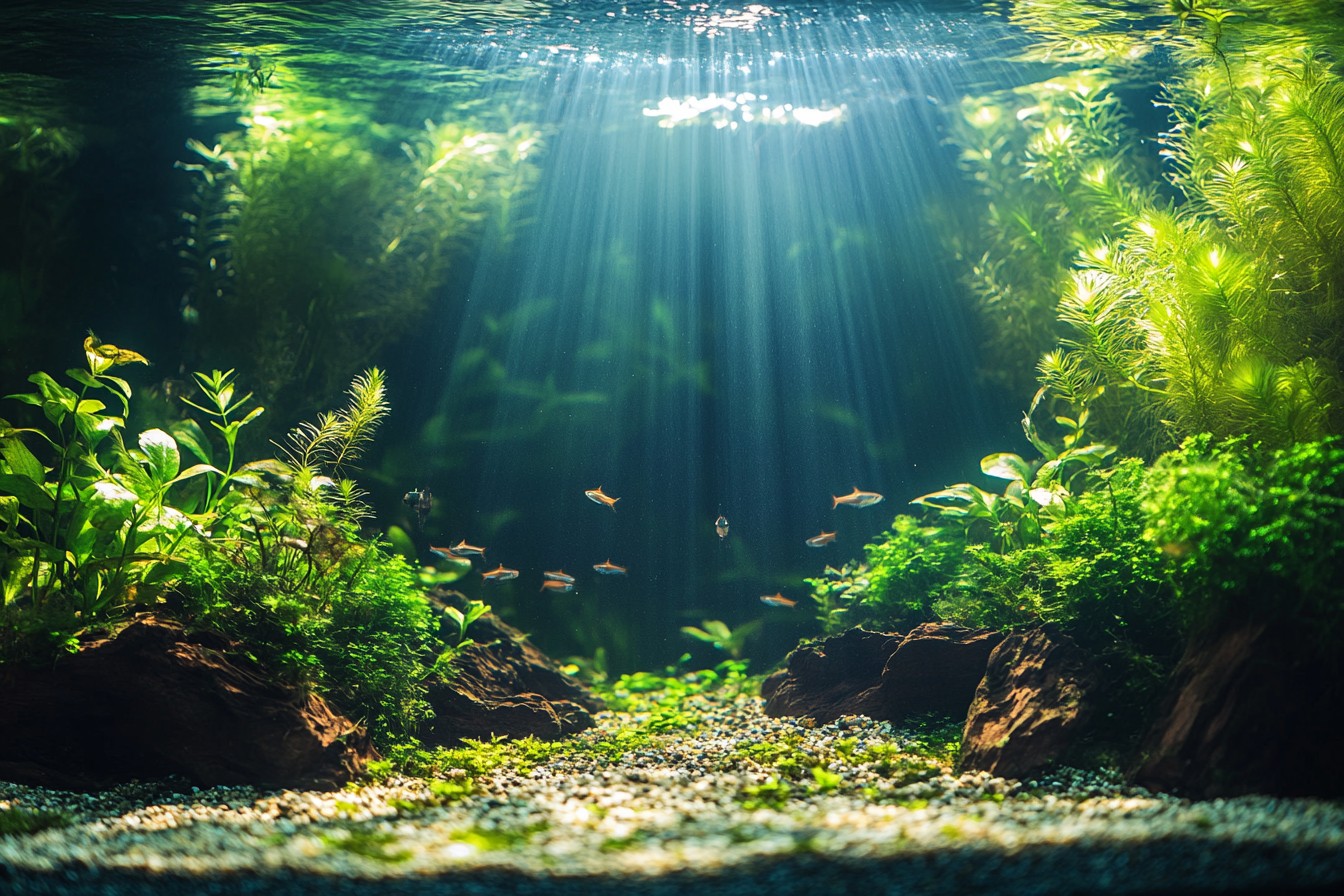
The problem was solved by putting a LED strip along the top back border of the tank so that the background lighting LED tank receives light separately from the rest of the tank. This technique, sometimes referred to as backlighting, aids to create incredible depth. Different illumination can totally change the atmosphere: warm amber color simulates a sunset while cool blue transforms it into moonlit serenity.
Oh, plenty. You know the design background that I assumed to fasten with clear silicone but actually used white bathroom caulk to fasten? So do I, and what a sad thing it is.
Didn’t observe until it’d healed, sculpting a cloudy, bubbled disaster that necessitated totally dismantling the tank to repair. Or the time I built an intricate 3D background with several caves and, after fixing it, noticed that one of the protruding features completely blocked the filter intake. Or my personal favorite disaster: using an actual background material that leached tannins, turning a pristine planted tank into what resembled weak tea in just a few days.
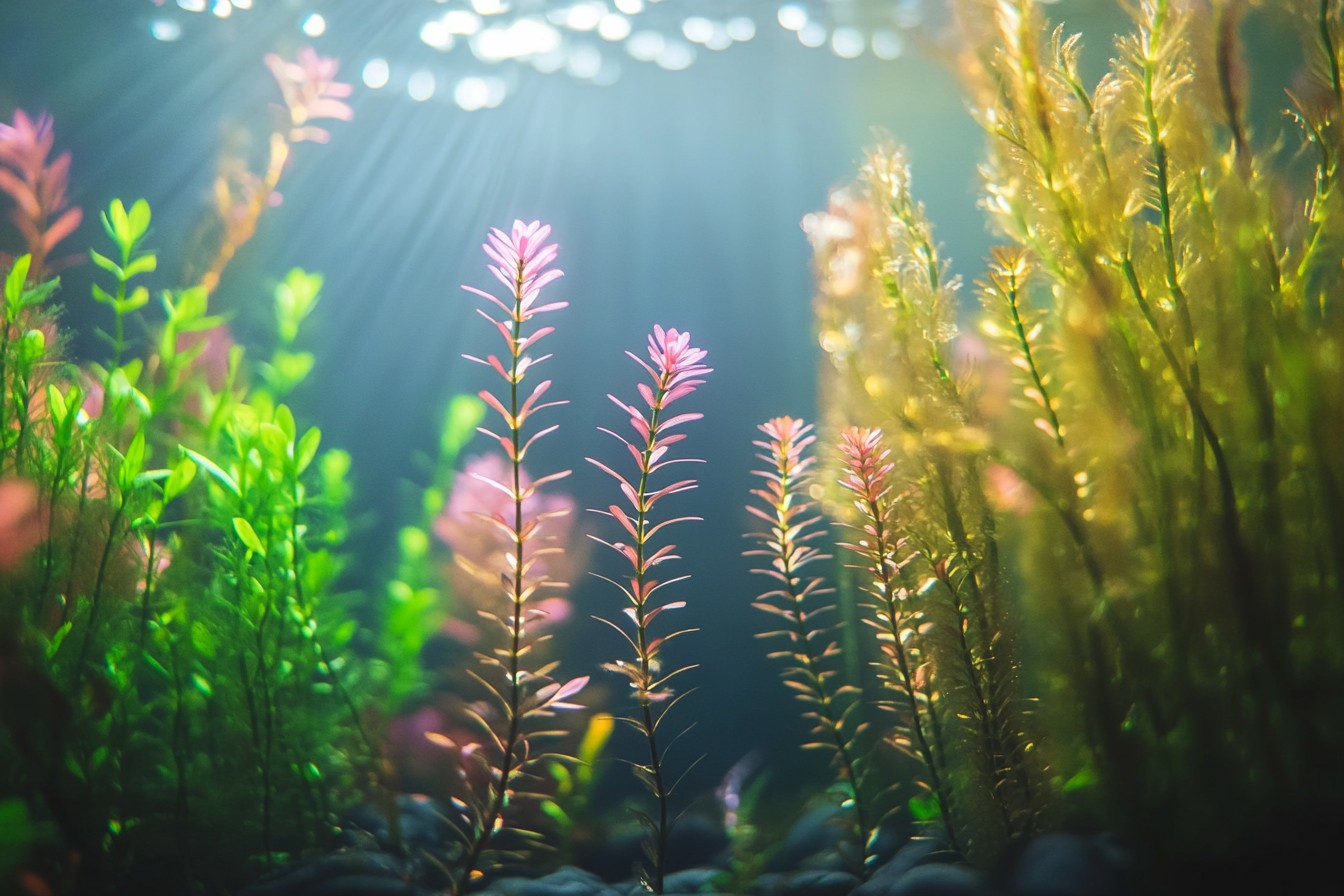
Every bungled project, however unfortunate, proved to be instructional, to some degree. Such is the case with not testing materials first in a display tank. I refer to obsessively measuring as ‘calibrating’ a mockup made in an Excel spreadsheet.
I create templates. I do water flow tests with food coloring to ensure circulation won’t be hampered. Seems excessive until you’ve disassembled an established tank due to background failure.
Beyond the ornamental, backgrounds serve strategically advantageous functions. The majority of fish experience a decrease in stress when aided with dark backgrounds, particularly those originating from heavily planted or muddy natural terrains. When suitable backgrounds are utilized, accordingly, calmer behavior, more natural swimming patterns, and increased breeding success tend to be observed.
The vibrant colors of my cardinal tetras seem to pop even more when I place them against a black background rather than the bare glass that was previously used for their tank. For fish that inhabit areas with clear water and are protected by schooling, backgrounds actually enhance safety behaviors. A gradual blue background enables my rummynose tetra to form tighter, more cohesive schools.
The explanation is that the background simulates an expanse of open water, which is the reason for their instinctive grouping behavior. My go-to tip regarding the placement of backgrounds is make sure to walk around and view it from every angle before making any final decisions.
If the background seems great from the front side, it might not be so great from the other side where most people enjoy looking at the tank. I always cover up templates with tape and take my time standing in every chair and every doorway to ensure every angle is viewed before making my final decision on the background. Fad or rule don’t matter—the perfect background is about celebrating the underwater world being created. In some instances, it requires a sophisticated 3D display while in other instances, all that is needed is a piece of black poster board.
The right choice is the one that has you gazing at your tank in admiration to the point that you momentarily forget the difference between an aquarium display and an actual universe that would need to exist beyond reality. Isn’t that the magic or allure of this hobby?
